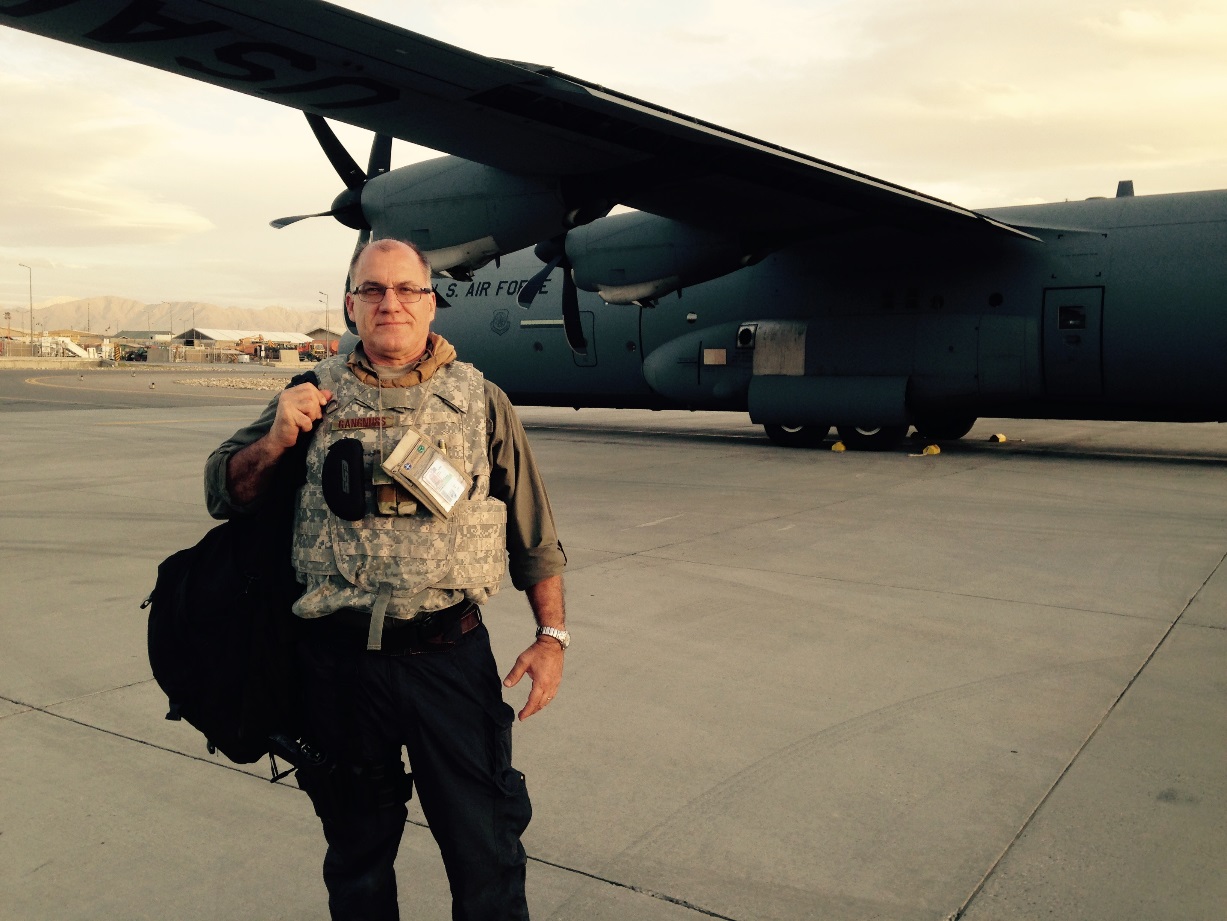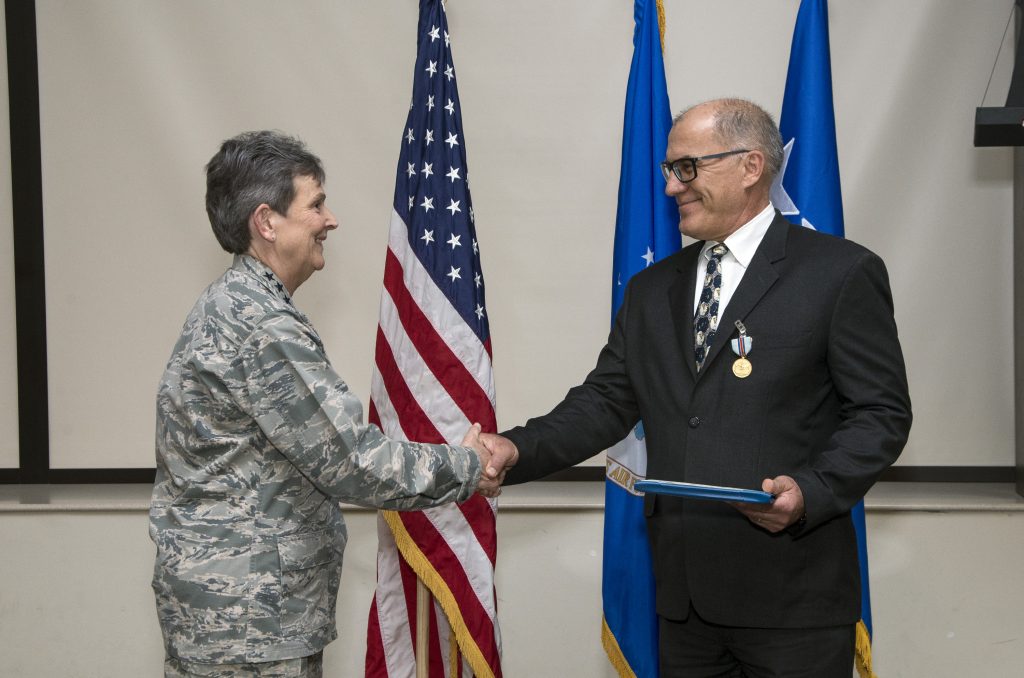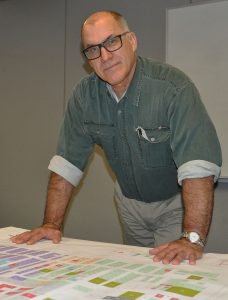‘If You Are Able to Help, Then You Help’: Heroic Alum Honored for Life-Saving Action in Afghanistan

Greg Gangnuss stands on an airfield in Afghanistan during his March 2015–April 2016 deployment.
While working in the headquarters of Camp Resolute Support in Kabul one October afternoon, Gregory Gangnuss gave pause when he heard a helicopter overhead, the chop-chop-chop of its blades whipping unusually close inside the flight zone.
The next sound—an unmistakable crash.
As he ran outside, he was met by a whirlwind of dust and smoke, the silhouette of a British Puma MK2 barely visible through a haze. The crushed aircraft was lying on its side in a puddle of spilled fuel.
“You are looking at it and wondering, ‘How can people survive this?’” he said. “But there was a hand coming out, and it was moving.”
Without regard for his own safety, Gangnuss (BS, Physical Science, ’88) climbed on top of the helicopter as its engine continued to wind down. Pulling off the door to the passenger compartment, the severity of the devastation was clear.
“There was no room to get in, but I could see pairs of boots. And there’s a realization those boots are attached to people and they are stacked like cord wood,” he said. “There’s a pair of boots, and a pair of boots, and a pair of boots.”
For 98 minutes, Gangnuss and three others worked on their stomachs in the cramped, smoke-filled quarters, using wire cutters to pull out the people trapped inside. He refused to stop until those alive were safely rescued and the deceased were recovered.
“We were all soaked in fuel and vapor and you could smell the vaporized fuel in the air,” he said. “There were times when you couldn’t breathe.”
The helicopter had been carrying nine coalition members to the NATO Resolute Support Mission headquarters when it struck a cable while landing on October 11, 2015. Five people perished in the crash, and the other four were saved, largely because of Gangnuss and those who rushed to aid alongside him.

For his selfless bravery, Gangnuss was officially recognized for his actions on February 22, 2017. Calling him an “American hero,” the US Air Force awarded him with the Air Force Civilian Award for Valor, an award reserved for heroism and courage exhibited by individuals who voluntarily risk personal safety beyond the call of duty.
At the time of the crash, Gangnuss, a senior environmental advisor for the Ministry of Defense, was midway through a voluntary deployment to Kabul. His job was to work with US redevelopment agencies and Afghanistan senior leadership for the eventual transfer of military property to the government of Afghanistan for economic development.
As a civilian, Gangnuss didn’t expect to experience danger or witness it firsthand during his deployment, although its possibility was never far from his mind.

“I think we all think that ‘When stuff hits the fan, what are you going to do?’ And I think about that. But when it happens, you just do it,” he said. “There isn’t any time to think. That’s just wasted. People are hurt and people need help and we need to help them, and if you are able to help then you help. There is no training for that. It just happens.”
After completing his deployment, Gangnuss returned in May 2016 to the Air Force Civil Engineer Center out of Joint Base San Antonio-Lackland, where he serves as branch chief for the Air Force Base Realignment and Closure Program. He has 25 years of civil service with the US Air Force and also holds a master’s degree in environmental sciences from Johns Hopkins’ Advanced Academic Programs. He lives in Mico, Texas with his wife and their three daughters.
Additional reporting provided by the US Air Force Civil Engineer Center Office of Public Affairs.


